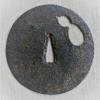-
Posts
5,960 -
Joined
-
Last visited
-
Days Won
19

ROKUJURO replied to Randy McCall's topic in General Nihonto Related Discussion

ROKUJURO replied to Randy McCall's topic in General Nihonto Related Discussion

ROKUJURO replied to phil reid's topic in Military Swords of Japan

ROKUJURO replied to Soshin's topic in Auctions and Online Sales or Sellers

ROKUJURO replied to andreYes's topic in Translation Assistance

ROKUJURO replied to Randy McCall's topic in General Nihonto Related Discussion

ROKUJURO replied to Randy McCall's topic in General Nihonto Related Discussion

ROKUJURO replied to andreYes's topic in Translation Assistance

